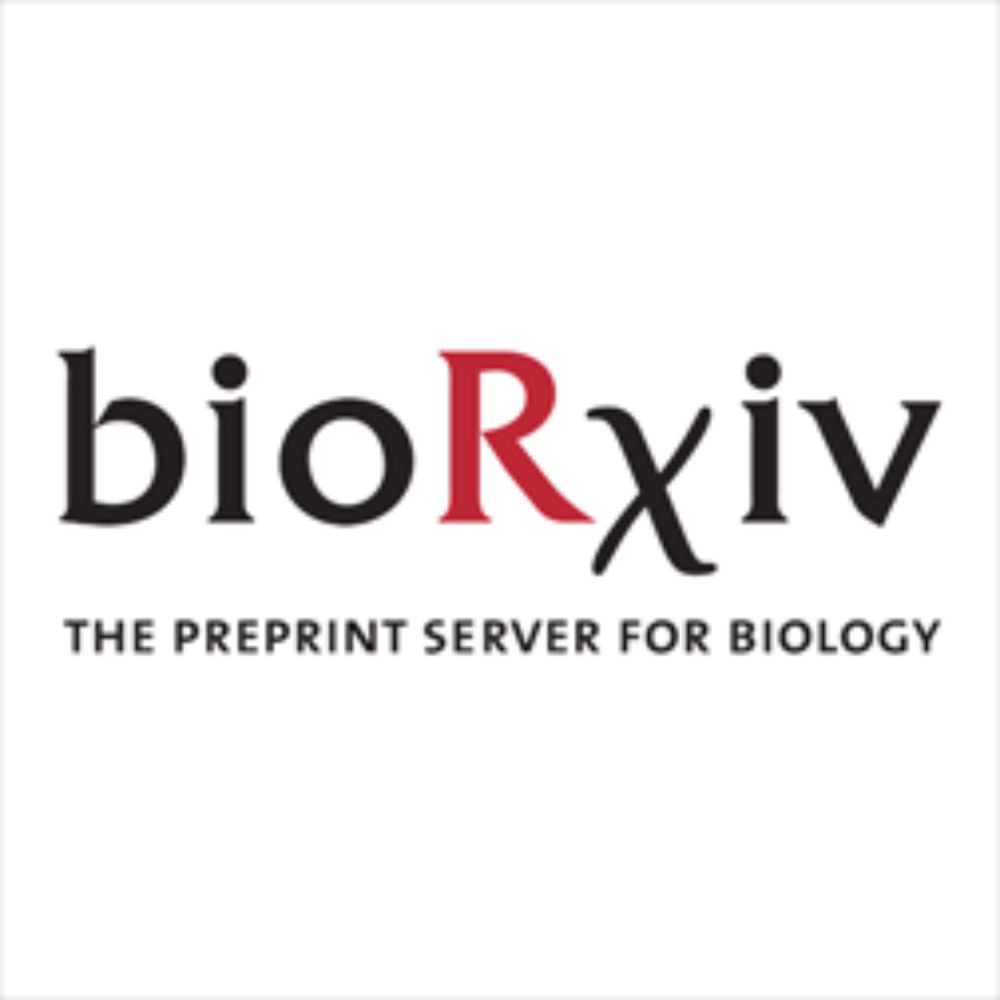Huge props to our grad student @manyakapoor.bsky.social for developing the simulations and the new MS2 analysis amongst other things! We also thank the transcription community for their invaluable feedback and always welcome further discussion😊
18.09.2025 15:24 — 👍 2 🔁 2 💬 0 📌 0
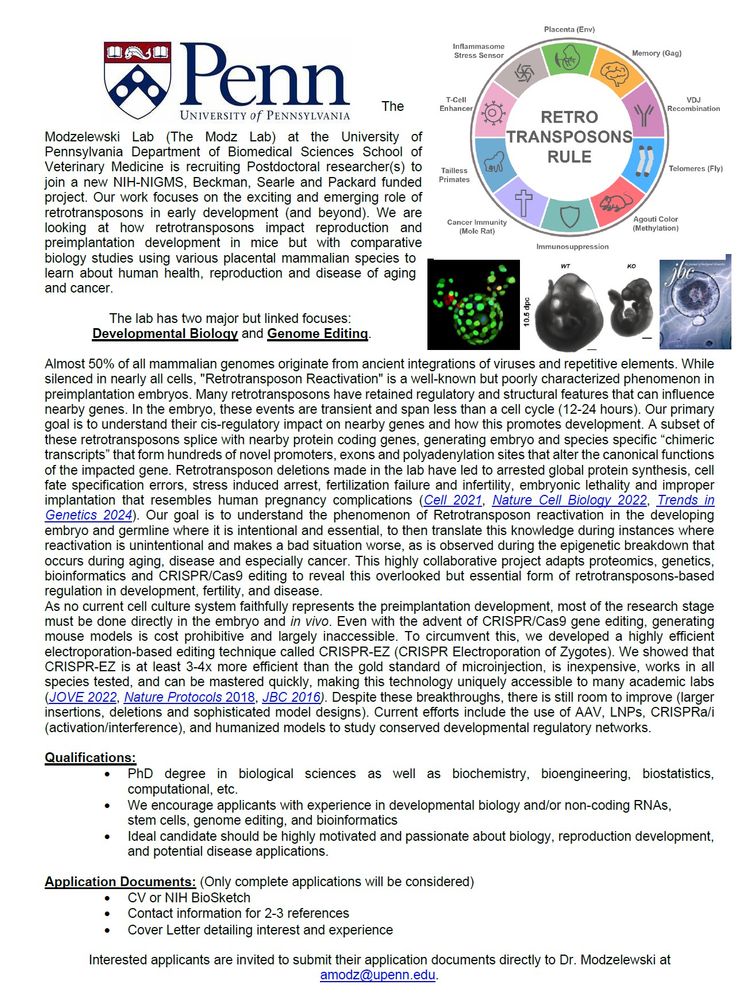
WE ARE HIRING! The lab got the Packard AND an R35! Please spread this PostDoc Ad around! Philly and Upenn are a great place to live and work!
13.05.2025 19:28 — 👍 13 🔁 7 💬 2 📌 0
5/n: Please reach out directly to me if you are interested. This is a unique opportunity at a time where increased centralized resources are critical to maintain and accelerate the pace of scientific discovery.
11.04.2025 10:48 — 👍 1 🔁 0 💬 0 📌 0
4/n We are seeking a microscope specialist/engineer. The role will include developing and implementing new microscope hardware, control software, customized analysis pipelines as well as collaborating with core users.
11.04.2025 10:48 — 👍 0 🔁 0 💬 1 📌 0
Advanced Core for Microscope Engineering (ACME) | Advanced Core for Microscope Engineering | Perelman School of Medicine at the University of Pennsylvania
3/n We will provide custom built ad hoc optical microscopy solutions, advanced image analysis, and consultation services to researchers across campus and beyond. We will implement technology in response to experimental needs instead of working within the bounds of commercially available technology.
11.04.2025 10:48 — 👍 0 🔁 0 💬 1 📌 0
2/n: ACME is co-directed by myself (Mustafa Mir), Melike Lakadamyali @melikel.bsky.social (www.lakadamyali-lab.com), Yihui Shen (www.imaging-systems-metabolism-lab.com), and Andrea Stout @aleestoutphd.bsky.social (www.med.upenn.edu/cdbmicroscopycore)
11.04.2025 10:48 — 👍 0 🔁 0 💬 1 📌 0
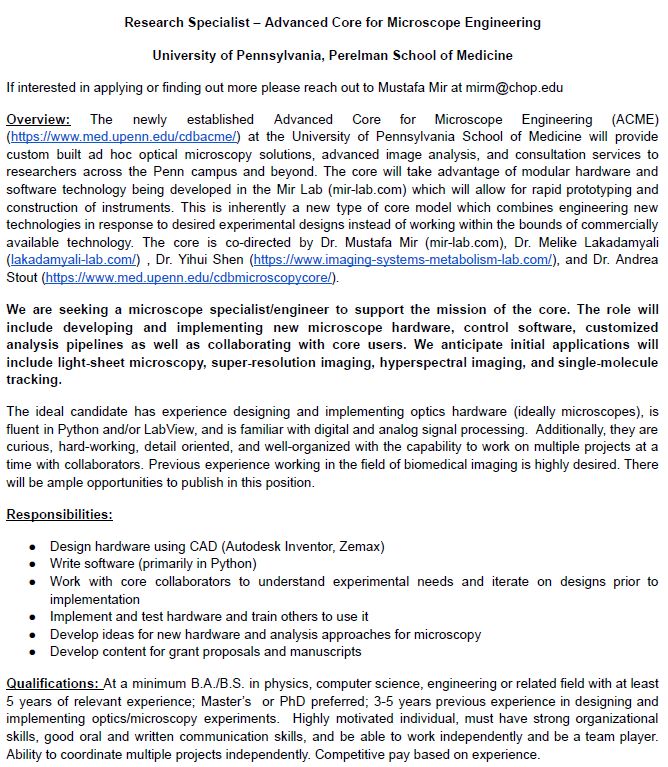
1/n We have an exciting new initiative at UPenn to provide custom advanced microscopy solutions: Advanced Core for Microscope Engineering (ACME): www.med.upenn.edu/cdbacme/ We are looking for a specialist to help run this new facility, job description is attached please help share widely!
11.04.2025 10:48 — 👍 9 🔁 9 💬 1 📌 1
9/ We welcome feedback, questions, and critical discussion from the community. Huge thanks to all our amazing co-authors for their insight, support, and collaboration throughout this work.
09.04.2025 14:31 — 👍 1 🔁 0 💬 0 📌 0

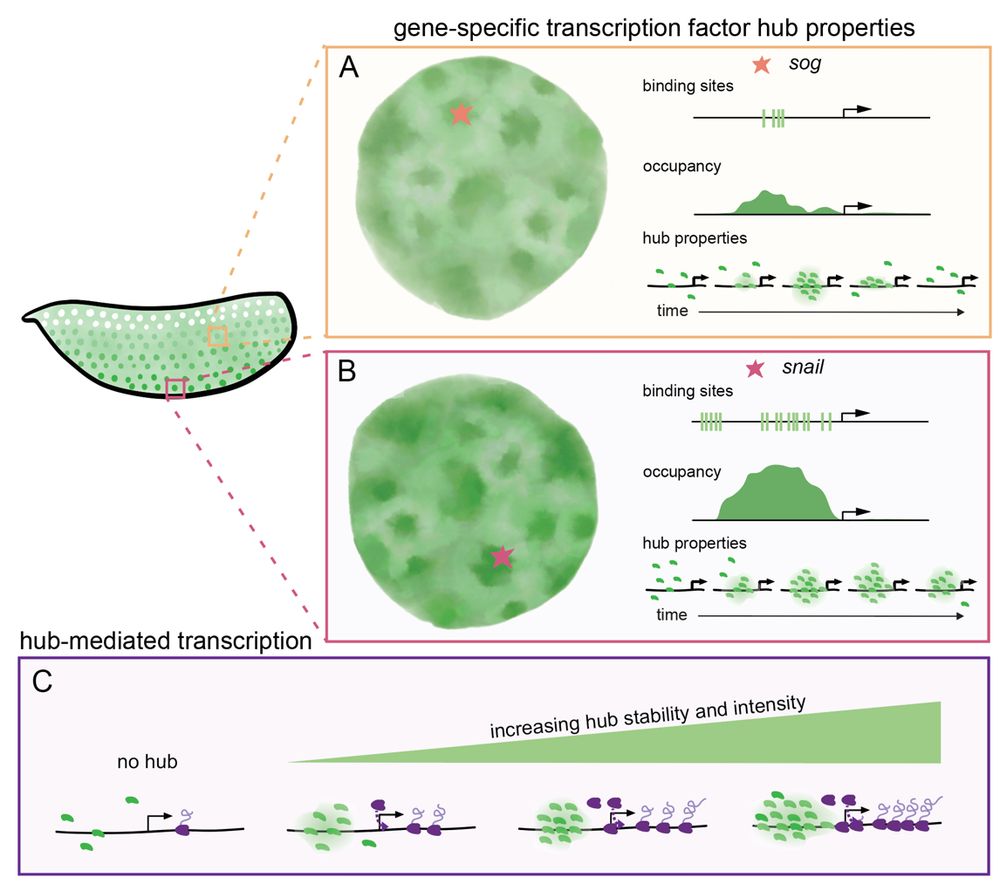
8/n: We suggest that enhancers encode the biophysical properties of transcription factor hubs (intensity and stability) through binding affinities and cofactors. Hub properties dictate gene occupancy and transcriptional kinetics, suggesting hubs are active executors of enhancer-encoded regulation.
09.04.2025 14:31 — 👍 1 🔁 0 💬 1 📌 0
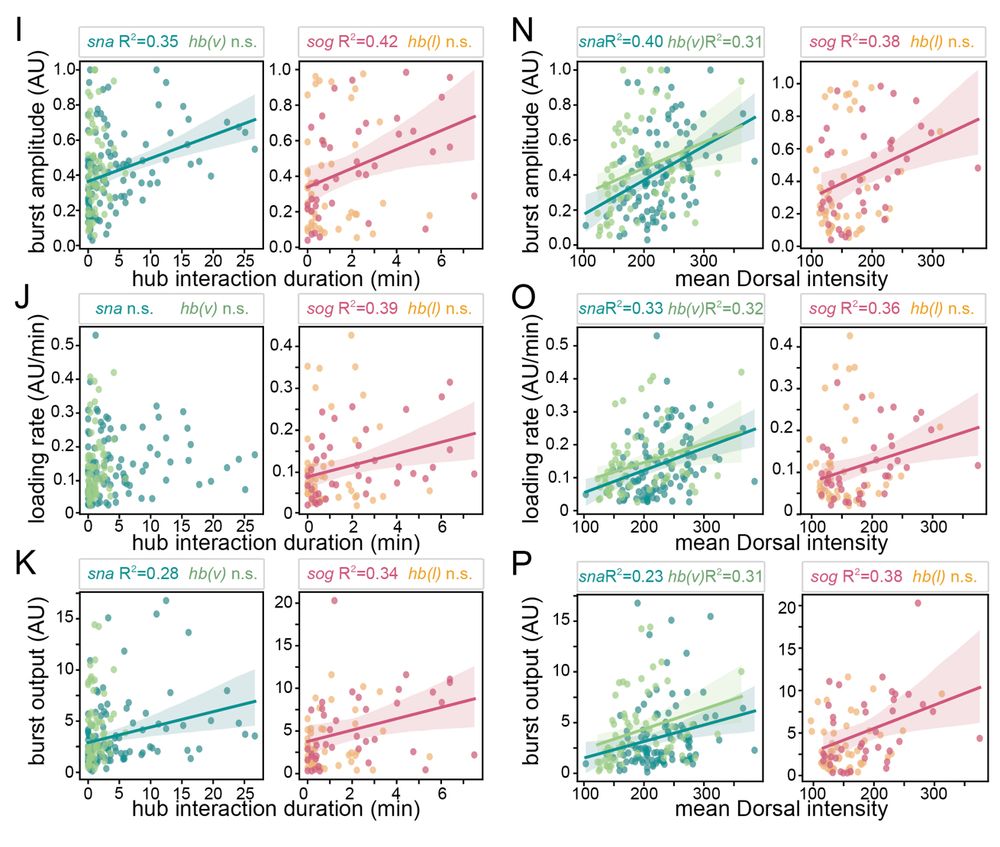
7/n: Hub intensity and duration correlate with burst amplitude, loading rate, and output suggesting that persistently interacting hubs with more molecules tune gene expression. Consistent with the idea that hubs facilitate transcription factor binding and promote expression.
09.04.2025 14:31 — 👍 2 🔁 0 💬 1 📌 0
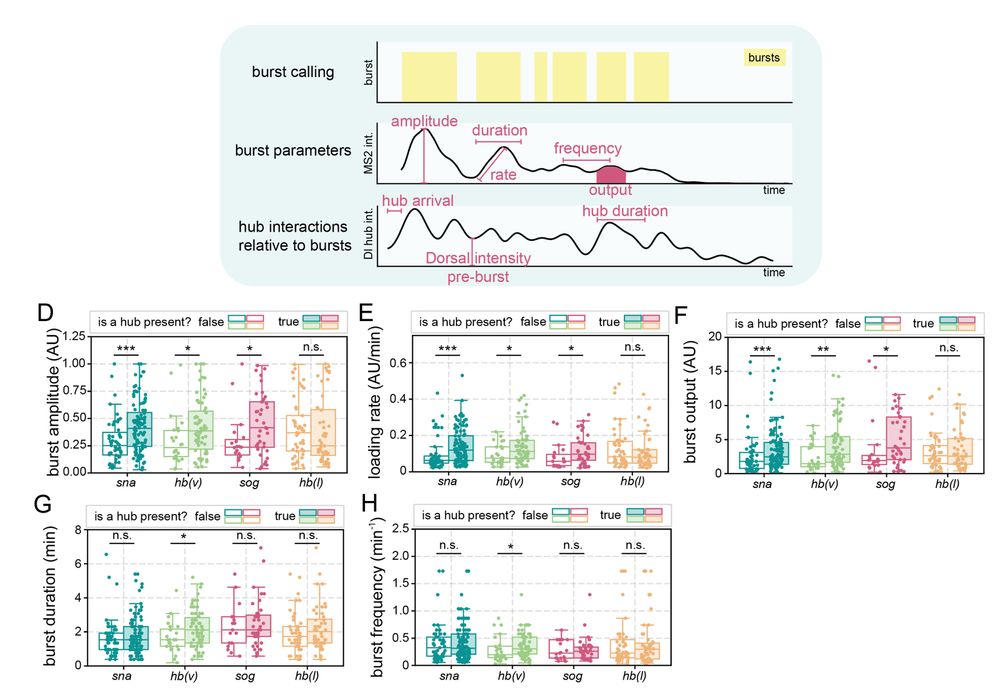
6/n: Hub presence at a gene is correlated with increased transcription burst amplitude, Pol II loading rate, and total output. Surprisingly, transient interactions between Dorsal hubs and hunchback (lacking Dorsal binding) boosts transcription in ventral nuclei where Dorsal concentration is highest
09.04.2025 14:31 — 👍 2 🔁 0 💬 1 📌 0
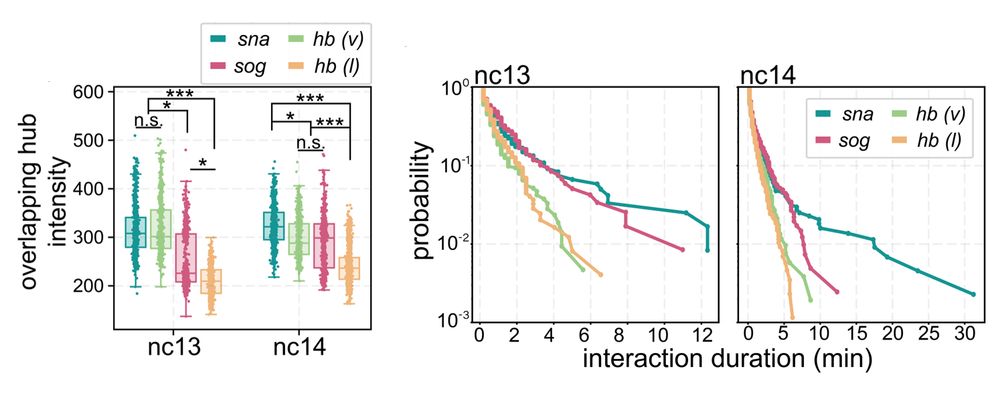
5/n: We found:
• snail has persistent hub interactions with high-intensity hubs
• sog: has slightly less persistent hub interactions with lower-intensity hubs
• hunchback (negative control): transient interactions without stable hub formation
09.04.2025 14:31 — 👍 1 🔁 0 💬 1 📌 0
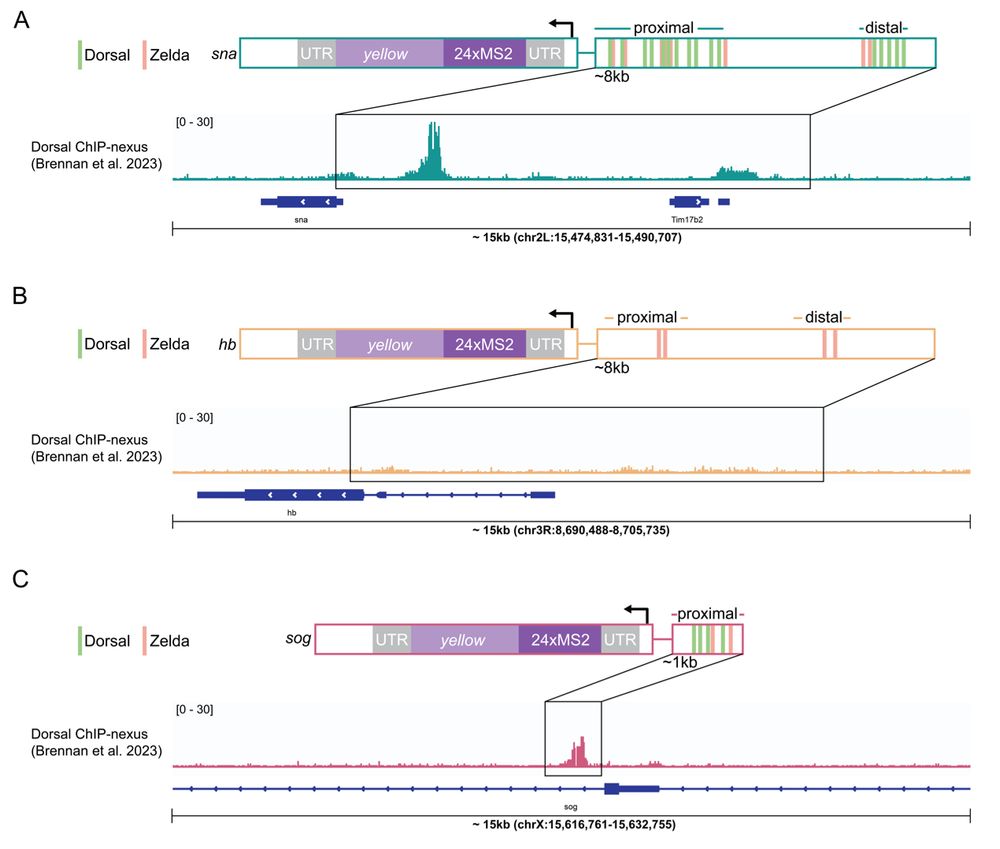
4/n: Next we examined Dorsal hub interactions at two target genes with distinct Dorsal occupancy and enhancer grammars, snai and sog, and as a negative control examined hunchback which has no dorsal sites.
09.04.2025 14:31 — 👍 1 🔁 0 💬 1 📌 0
3/n: First, we find that hubs form rapidly after mitosis and last through interphase. Nuclear hub density doesn't depend on nuclear concentration but hub intensity does, suggesting that hub formation may be independent of concentration, but hubs accumulate more protein with increased concentrations.
09.04.2025 14:31 — 👍 1 🔁 0 💬 1 📌 0
2/n: Transcription factor hubs (dense local accumulations) regulate gene expression by promoting the frequency of binding. They are often discussed as having uniform properties based on protein sequence and concentration. We wondered if their biophysical properties vary in a gene dependent manner.
09.04.2025 14:31 — 👍 4 🔁 0 💬 1 📌 0
In light of policies to defund biomedical research, and with judicial hearings happening today, we hope to highlight the many ways biomedical research improves people's lives, and to convey how damaging the proposed cuts would be... not just for us researchers, but for everyone.
21.02.2025 21:06 — 👍 34 🔁 17 💬 2 📌 0
And all the MS2 interaction analysis was done by an amazing bioengineering graduate student @manyakapoor.bsky.social who just joined Bsky!
12.02.2025 16:49 — 👍 1 🔁 0 💬 0 📌 0
Major oversight in my earlier postdoc: This work was led by our wonderful postdoc @mukherja.bsky.social who also built the microscope that enabled these experiments
12.02.2025 16:18 — 👍 1 🔁 0 💬 1 📌 0
We can't follow the same cluster but see a shift in cluster kinetics across nuclei. We can't say anything about initiation factors since we are just looking at pol2 and we are testing effects of recruitment vs elongation with the drugs. Will check our language to make sure this is clear. Thanks.
12.02.2025 13:56 — 👍 1 🔁 0 💬 0 📌 0
7/n Overall we show that Pol II clusters are functionally labile and suggest that they likely represent collections of molecules engaged at a single gene locus. Please take a read and send us your critical feedback!
12.02.2025 11:36 — 👍 6 🔁 0 💬 4 📌 0
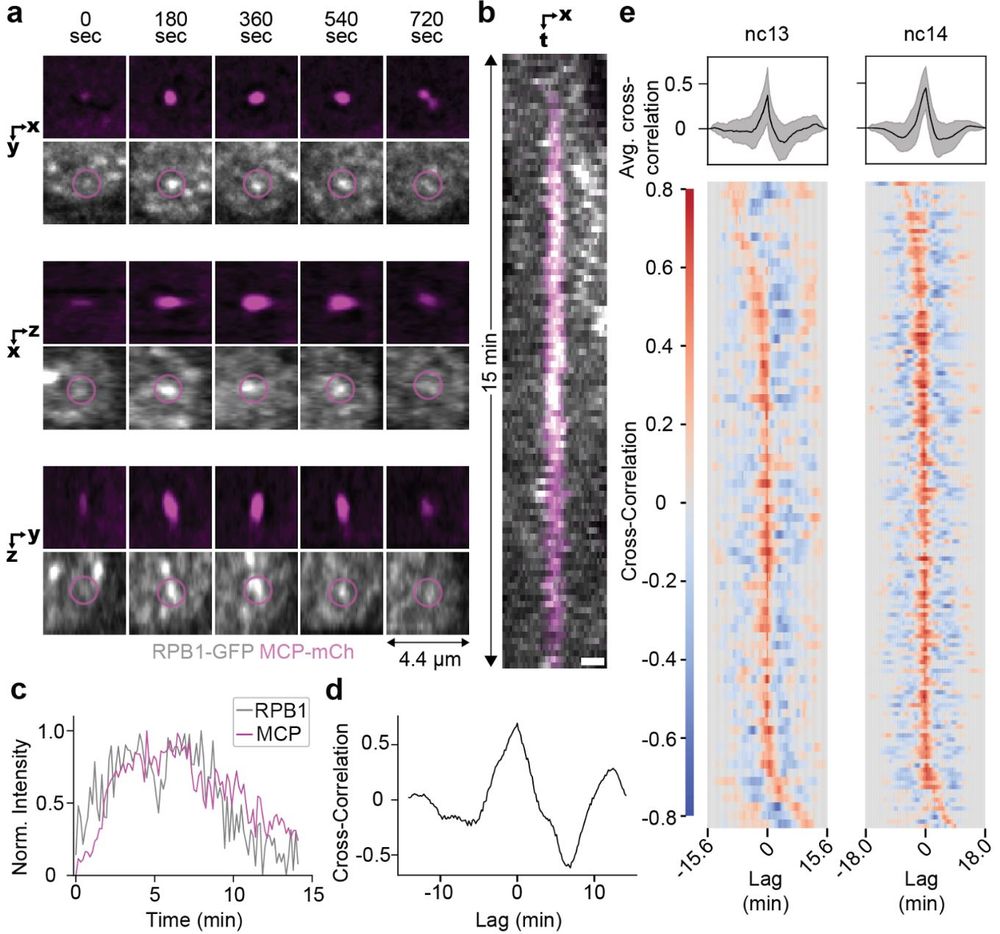
6/n Using simultaneous imaging of nascent transcription and Pol II clusters we found that a single cluster remains associated with an active gene during a transcription burst and the intensity of the cluster is highly correlated in real time with the amount of nascent transcription.
12.02.2025 11:36 — 👍 3 🔁 0 💬 1 📌 0
5/n Using inhibitors of initiation and elongation we found that cluster formation is dependent on initiation and that transcription elongation leads to a reduction in cluster lifetime.
12.02.2025 11:36 — 👍 4 🔁 0 💬 1 📌 0
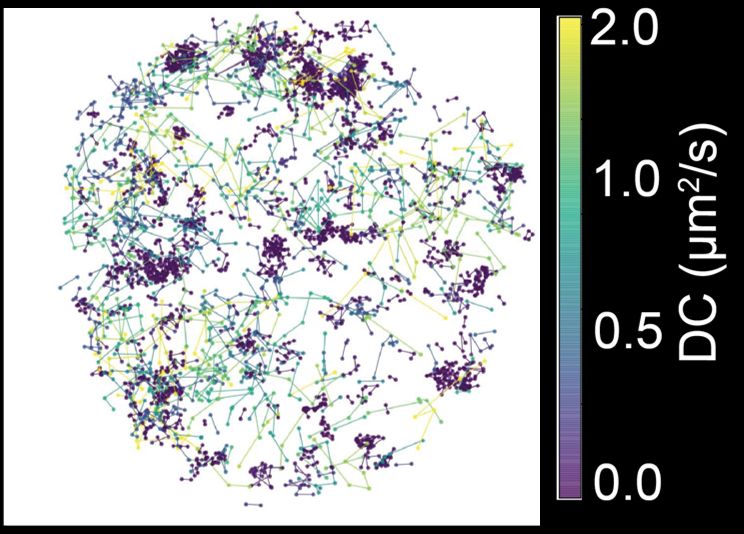
4/n We found that Pol II clusters undergo a transformation as the zygotic genome is activated. From initially being mostly composed of molecules engaged in transcription initiation to becoming hotspots of elongating molecules.
12.02.2025 11:36 — 👍 3 🔁 0 💬 1 📌 0
3/n We used single-molecule tracking and lattice light-sheet microscopy in live Drosophila embryos to ask how clusters change during zygotic genome activation (when there is a ~3x increase in transcription) and how clusters influence transcription levels.
12.02.2025 11:36 — 👍 7 🔁 1 💬 1 📌 0
2/n Since their discovery in the 1990's the functional roles and mechanisms of formation of RNAPII clusters have been heavily investigated. Models have ranged from transcription factories containing many genes to condensates that transiently "kiss” active genes.
12.02.2025 11:36 — 👍 4 🔁 0 💬 1 📌 0
1/n Excited to share our new preprint! Using live imaging in Drosophila embryos, we show that RNA Pol II clusters switch from sites of initiation to elongation during zygotic genome activation and that they are stably associated with an active gene: www.biorxiv.org/content/10.1...
12.02.2025 11:36 — 👍 97 🔁 32 💬 5 📌 4
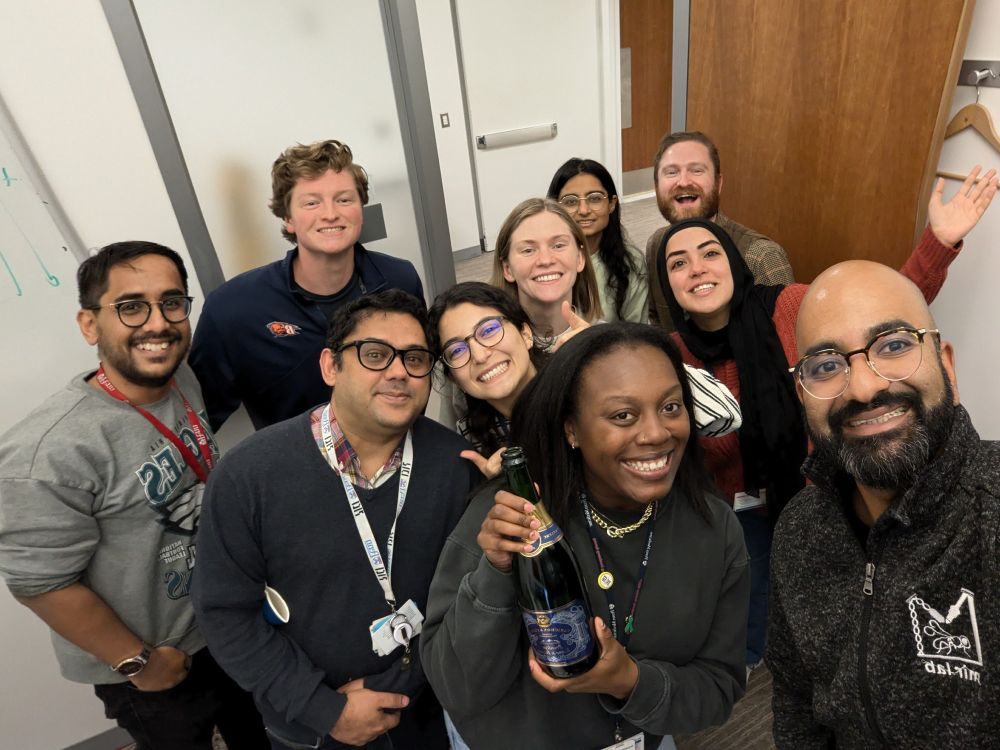
Big congratulations to our MD/PHD student @driaadigun.bsky.social on receiving a F31 award from NIGMS to "Illuminate the Molecular Mechanisms of Replication and Transcription Coordination" during zygotic genome activation and support her training.
17.01.2025 14:10 — 👍 23 🔁 3 💬 0 📌 1
Glad you appreciate this article! Thanks for sharing with others.
20.12.2024 10:52 — 👍 1 🔁 0 💬 1 📌 0
Associate Professor at Duke | Director of Duke Spark | AI in Medical Imaging
Associate Professor 🧑🔬🧑🏫 at McGill University 🇨🇦 CRC in Spatial organization of living systems 💧🦠🪱🔬
https://weberlab.ca/
PhD student @ UPenn | Early mammalian development, mitosis, & microscopy
She/her Permadoc @ UOregon zebrafish community
NIH and 501c3 funded scientist Molecular genetics of human diseases
Married to a cute OD
Parent of two awesome grown people
Daughter of a mild-mannered mom in memory care
Dad. Microscopist. Photographer. Director of OiVM Microscopy Core, Baylor College of Medicine http://youtube.com/@OiVM
Associate Professor of Chemistry
Ph.D. I Neuroscience I Neurophotonics | Microscopy | Coherent Corp. | My views
Imaging specialist at CAMDU microscope facility, Warwick, UK + lattice lightsheet + cell biology
Director, CDB Microscopy Core at the University of Pennsylvania. Gardener, native plant enthusiast, dog person. Gardening in Delco (Delaware County), Pennsylvania
#Chromatin biologist/biophysicist @NIG & SOKENDAI in Japan.
Chromatin is very dynamic and flexible, but NOT regular!!! 🧪🧬🔬
My career and work: http://bit.ly/2CuF4L5
Lab HP: https://bit.ly/3F1a8nk
YouTube Seminar: https://bit.ly/4fYZiOj
Scientist @UPenn; immunologist and virologist; views my own
Presidential Associate Professor of Cancer Biology
@Penn_CBIO & Asst. Dean @RTAatPennMed @PennMedicine. Posts her own.✊🏾🏳️🌈
Assistant Professor of Physiology at the University of Pennsylvania | studying long-lived mitochondrial proteins, organelle stability, mtDNA fidelity in neurons and oocytes
www.bombawarczaklab.com
Cancer Biologist at the University of Pennsylvania
Developmental Biologist | Postdoc in Holger Gerhardt's Lab at MDC in Berlin | Vasculogenesis | Angiogenesis | Hematopoiesis | Zebrafish | Former Embryo
Postdoc @FurlongLab @embl.org - Former PhD @scicambridge.bsky.social
Interested in understanding molecular processes within the cell nucleus in the context of different cell states #chromatin #TranscriptionFactors #biophysics #technologydevelopment
Molecular biologist with interest in transcription, chromatin, nuclear organisation, and developmental biology. Runs a lab, teaches students, and is concerned about the world we live in.
Cardiologist and stem cell biologist. Dean at Penn Medicine. Retired Ultimate Frisbee enthusiast. Views are my own, not Penn’s
Associate professor at Penn studying X-chromosome Inactivation & sex differences in the immune system. She/her.









